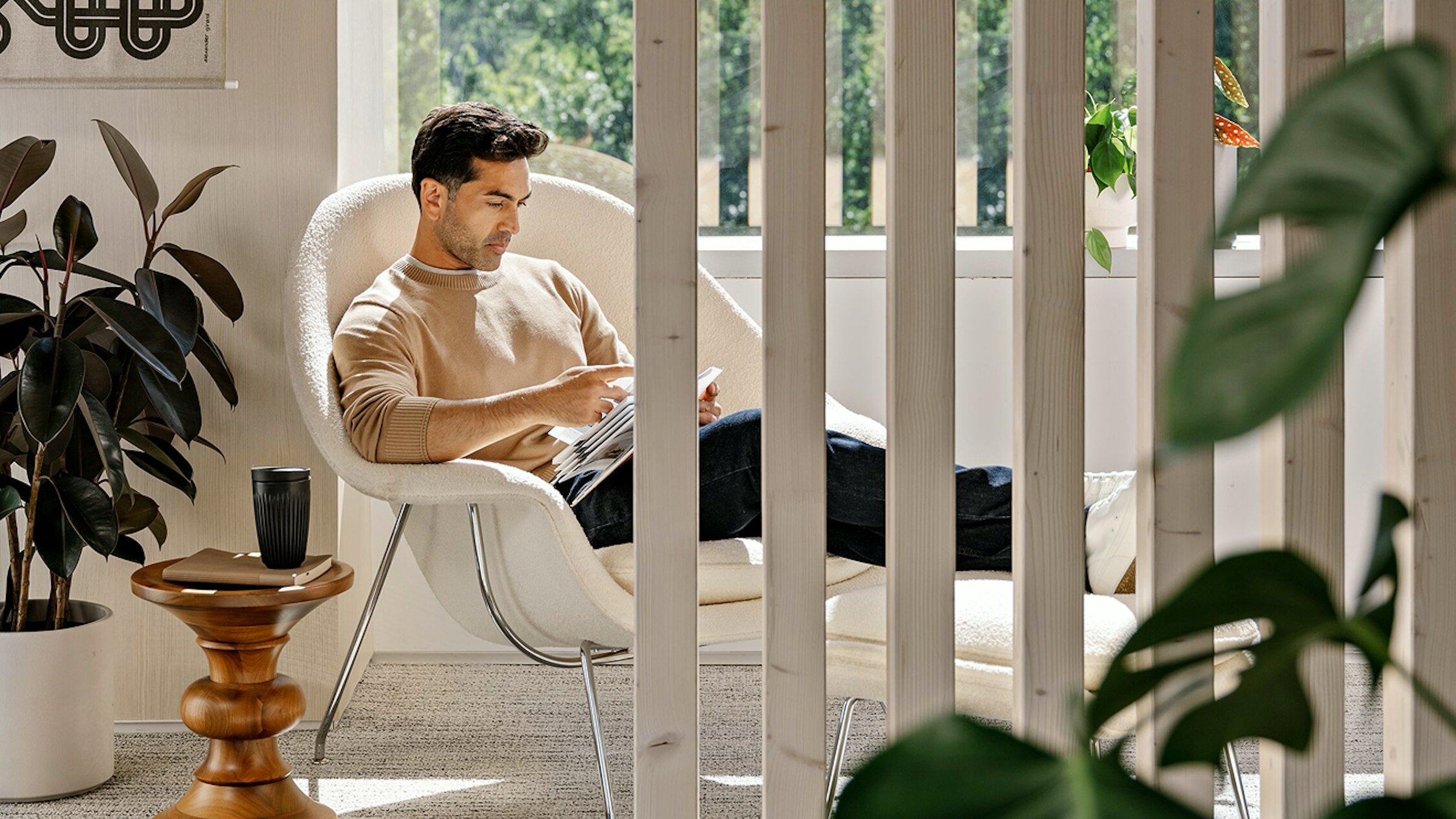Harness the power of place attachment
Place attachment describes the powerful bonds we form with environments. Understanding it can help organizations create places where relationships flourish between people and their work and among colleagues.
Apr 24, 2025
3 minutes

Friends who spend a lot of time together tend to pick up one another’s mannerisms. Similarly, the values reflected by the places where we spend our time tend to grow more meaningful to us. (Stedman, 2003)
The environments we occupy—especially at home, school, or work—contribute profoundly to who we are, how we feel, what we do. (Scannell et al., 2010).
The activities and interactions that these environments support shape our productivity, our mood, even our relationships. That’s why it’s important for workplace planning to nurture the relationships that enable great work.

Putting theory into practice
Organizations can help strengthen employees’ sense of attachment to the workplace across various levels of interaction. Consider the following:
At the individual level
By providing their people the opportunity to personalize spaces with adjustable environmental and ergonomic features, or simply by providing dedicated workpoints, organizations can strengthen place attachment and support people’s personal interests. This helps individuals build more meaningful relationships with others across the organization. (Gifford, 2014; Byron et al., 2015)
At the group level
By planning designated team neighborhoods for employees who do not have an assigned workspace, organizations can foster familiarity. This sense of group ownership not only strengthens interpersonal relationships among the team members who share the space, but it also can help improve problem-solving and enhance creativity. (Kenworthy et al., 2024)
At the community level
To encourage a sense of attachment to place, the broader organization, and the people who make it function, organizations can plan frequent opportunities for people from unaffiliated teams to connect (Commission for Architecture and the Built Environment, 2005). Beyond basic functional requirements for hosting large groups—capacity, flexibility, hospitality, etc.—these occasions require spaces that also reflect the values and culture of the organization.


Every place is a mirror
Workplace design matters. If you’re reading articles on millerknoll.com, you already know that. But the value people get from their workplace goes deeper than most people think.
Our attachments to places, coworkers, and organizations grow more important over time. Because of this, place attachment influences employee retention. As committed and engaged employees grow more attached to the people and places associated with their jobs, they often feel less compelled to leave. (Lewicka, 2011)
Places make a positive impact on our lives because of what they mean to us—even more than how well they function for us. People believe that the messages sent by physical environments more honestly reflect an organization’s culture and priorities than written mission statements or corporate values. (Schein, 1990; Becker et al., 1995)
At MillerKnoll, we help organizations around the world create places that clearly and authentically communicate their unique vision to employees—both current and prospective—as well as partners, clients, even competitors. We work with clients to understand the cultural and geographic context of their facilities, then align space planning and design with the activities and interactions your workplace needs to support.
Creating a place that’s an accurate reflection of an organization not only increases the likelihood of place attachment, but also the positive outcomes that come along with it.
3-point recap
The emotional bond people form with places they find meaningful can be a powerful force.
This phenomenon, known as place attachment, can help organizations build and strengthen bonds among employees and between employees and their organization at the individual, group, or community level.
MillerKnoll helps organizations create places that accurately reflect their vision while supporting their employees, which can help improve employee engagement and retention.

Sources
Stedman, Richard C. “Is it really just a social construction?: The contribution of the physical environment to sense of place.” Society & Natural Resources 16, no. 8 (2003): 671-685.
Scannell, Leila, and Gifford, Robert. “Defining Place Attachment: A Tripartite Organizing Framework.” Journal of Environmental Psychology 30, no. 1 (March 2010): 1-10.
Gifford, Robert. “Environmental Psychology Matters.” Annual Review of Psychology 65 (2014): 541-579.
Commission for Architecture and the Build Environment and British Council for Offices. “The Impact of Office Design on Business Performance.” May 2005.
Byron, Kristen, and Laurence, Gregory. “Diplomas, Photos, and Tchotchkes as Symbolic Self-Representations: Understanding Employees’ Individual Use of Symbols.” Academy of Management Journal 58, no. 1 (February 2015): 107-130.
Lewicka, Maria. “Place Attachment: How Far Have We Come in the Last 40 Years?” Journal of Environmental Psychology 31, no. 3 (September 2011): 207-230.
Schein, Edgar H. “Organizational Culture.” American Psychologist 45, no. 2 (February 1990): 109-119.
Becker, Franklin, and Steele, Fritz. Workplace by Design: Mapping the High-Performance Workscape. San Francisco: Jossey-Bass, 1995.
Hungry for more?
Explore more ways we can help you expand your impact on your organization and the world.

The rise of relationship-based work
As more organizations prioritize connection, collaboration, and culture in this new era of work, the workplace must take on a new role: to develop and grow relationships.

Project profile: Ledger
How a flex office and retail space provides a new way of working and doubles as a city center for an Arkansas community.

Light strategies, heavy changes
Architect and urban designer Sol Camacho on architecture as a tool for change.